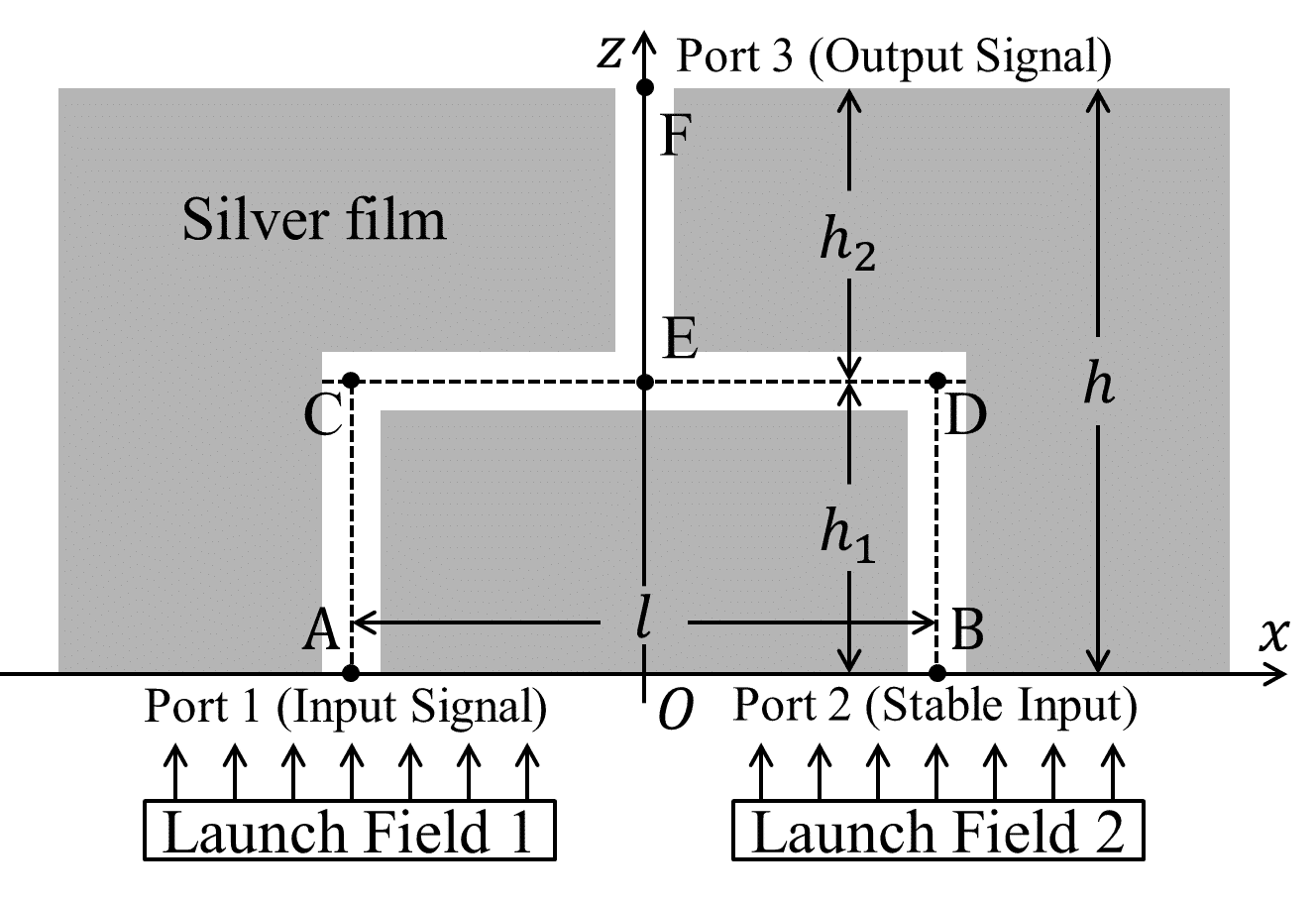
Theoretical Designation of All-Optical Modulator Consisting of Subwavelength Metal Slits
We have designed by simulation computation an all-optical modulator with simple structure. It consists of subwavelength metal slits, and its structure mimics that of an electronic transistor, having one input (Port 1), one base (Port 2) and one output (Port 3),see

Fig. 1. The parameters of the structure in Fig. 1 are h1 = 0.5 μm, h2 = 0.51 μm, l = 1.18 μm, w = 0.1 μm.
The light wavelength in vacuum is l0 = 0.8 mm and correspondingly the wavelength of in-slit SPP mode lS = 0.653 mm. The mechanism of the in-slits SPP interference is utilized. The light entering the Port 2 is invariant, and the input signal interferes with it, which determines the output. As a primary study, the static response is simulated. That is to say, the input signal is a plane wave continuously emitted from the launch field 1 without the variation of its profile. When the phases of the input and base are the same, the output shows a

Fig. 1. Model structure of the optical modulator.
function of amplification, while when their phases are contrary, the output shows a diminishing function. Figure 2 shows the results. Therefore, the device acts as either an amplifier or a diminishing one. This all-optical modulator does not require any auxiliary equipment, and its response
time is of the order of magnitude of 0.1 picoseconds. (a) Dj = 0, (b) Dj = π. The inset in (b) shows the When the widths of the slits are in sub-micrometers, results around Iin=1. The lines are to guide eyes.
the device is of nano-scaled structure.
This work was supported by the Natural Science Foundation of China (No. 61275028).
wanghuaiyu@mail.tsinghua.edu.cn
Powered by Eventact EMS